|
Click pictures for a larger version.
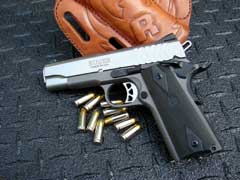
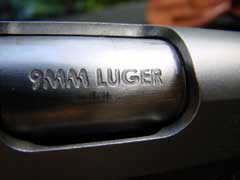
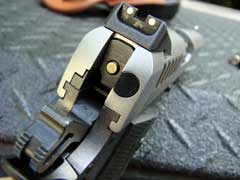

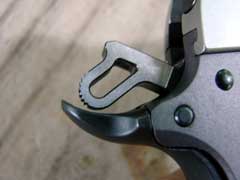
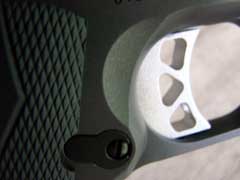
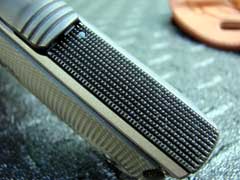
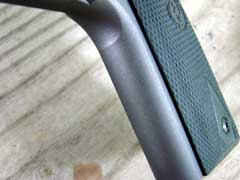
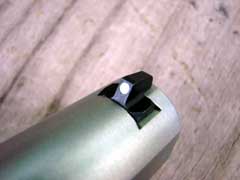
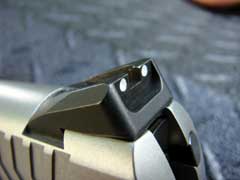

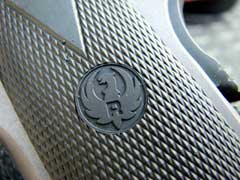

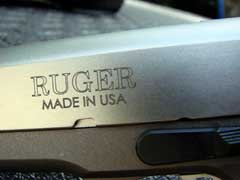
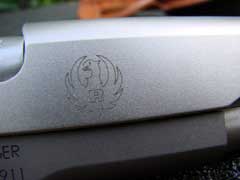
|
|
About five and one-half years ago, Ruger
introduced their version of the legendary 1911 semi-automatic
pistol. Chambered for the popular 45 ACP cartridge, the
SR1911 has met with great success in a market already crowded
with competitors. Following up on the heels of the full-size
SR1911, Ruger introduced the steel-framed
Commander-length pistol, followed by the aluminum-framed
version of that dandy pistol. Like the other pistols in
Ruger’s SR1911 line, the Lightweight Commander has also been
successful in the crowded marketplace.
Now, with more and more shooters seeking a
lightweight 1911 chambered for the 9x19mm (9mm Luger) cartridge,
Ruger has obliged, and introduced just recently their 9mm
SR1911. The 9mm version is also built on the Commander-sized
frame. While not marketed by Ruger as a “Commander”, that
name belonging to Colt, it is, nevertheless, a Commander, as
that has become a generic term that is understood by most to
mean a 1911 pistol with a lightweight aluminum frame, slide
shortened by three-quarters of an inch, and a full-sized grip.
While the 1911 platform has built its
reputation on the 45 ACP cartridge, there is historical
precedence for a 1911 Commander-sized pistol chambered for the
9x19mm cartridge. The first Commander pistols built by Colt in
1949 were chambered for the 9mm cartridge, for inclusion in
military trials as a pistol to replace the standard steel-framed
45 ACP 1911-A1 for use by officers and other specialized troops.
After the US Military failed to adopt a new pistol, Colt
introduced the shortened pistol to the commercial market as the
Commander, chambered for the 45 ACP and 38 Super cartridges.
Today, there is even more reason for a
fighting pistol to be chambered for the 9mm cartridge. Many
people prefer the lighter recoil of the 9, compared to the 45,
and with today’s excellent bullet designs, the 9mm can be
depended upon to get the job done. Besides just the lighter
recoil, the 9mm Ruger uses a lighter recoil spring than does the
45, making the slide easier to operate. To assist in the
operation of the slide, the Chevron-shaped grooves near the rear
of the slide provide a secure grasp for chambering the first
cartridge out of the nine-shot magazine. This would be a good
place to note that Brownell’s
sells some very good ten-shot magazines for the 9mm 1911
pistols. I have not tried them in this Ruger, but Ed Head
reports that they work perfectly in his Ruger 9mm SR1911 pistol.
The lightweight frame and shortened slide
drops almost three-quarters of a pound off the weight of the
full-sized pistol, and makes the smaller SR1911 much
better-suited for concealed carry. I covered the lightweight
SR1911 in detail in my review of the 45 ACP version, so I
won’t plow the same ground here, but will instead focus upon
what makes the 9mm version unique.
The
Ruger SR1911-CMD9-A pistol wears a satin stainless slide atop
the dark gray anodized aluminum frame. The hammer and trigger
are skeletonized units. Like the other pistols in Ruger’s
SR1911 line, the pistol does not incorporate a firing pin
safety, as none is needed. Ruger uses a lightweight titanium
firing pin to prevent the pistol from firing if dropped upon its
muzzle. The SR1911 also, thankfully, has no magazine disconnect
safety. The grips are a black synthetic rubber, like those that
I first saw on the early prototype SR1911 over five years ago.
The grip safety, checkered mainspring housing, slide stop, thumb
safety, and magazine release are a matte black, all working
together to distinguish this pistol visually from the others in
Ruger’s SR1911 line. The sights are black genuine Novak, with
the familiar three-dot pattern. Unlike the lightweight 45 ACP
SR1911, the 9mm version does not use a titanium insert in the
feed ramp; instead, it uses a ramped barrel, which incorporates
the feed ramp into the barrel, eliminating the need for an
insert in the feed ramp as on the 45 version. The 9mm pistol
ships with two nine-shot stainless steel magazines, a bushing
wrench, cable lock, and instructions.
Critical
Specifications:
| Weight |
29.2 ounces |
| Height |
5.45 inches |
| Length |
7.87 inches |
| Slide Width |
0.9 inch |
| Maximum Grip Width |
1.22 inches |
| Frame Width |
0.753 inch |
| Maximum Width |
1.258 inches |
| Trigger Pull |
4.4 pounds |
| Trigger Reach |
2.76 inches |
| Barrel Length |
4.3 inches |
| Construction |
Stainless Steel /
Aluminum |
| Sights |
Novak Three-Dot |
| Magazine Capacity |
9 rounds |
| Magazines Supplied |
2 |
| Firing Pin Safety |
No |
| Magazine Disconnect Safety |
Hell No |
| MSRP as of July 2016 |
$979.00 US |
Shooting the 9mm Ruger is very pleasant, and that is the
main reason that some people prefer the 9mm in a lightweight
1911 pistol. Recoil is very soft, compared to the 45 ACP
version, for the simple reason that the 9mm fires a lighter
weight bullet.
I
fired a variety of ammunition over the chronograph to check
velocities, with the results listed in the chart below.
Velocities are listed in feet-per-second. Bullet weights are
listed in grains. JHP is a jacketed hollowpoint bullet. DPX is a
hollow nose homogenous copper bullet. FMJ is a full metal jacket
roundnose bullet. FMJ-FN is a full metal jacket flat nose
Buffalo Bore Penetrator bullet. PB is Pow’RBall,
a specialty bullet from Cor-Bon. XP is a specialty homogenous
copper bullet from Lehigh Defense. Glaser is a pre-fragmented
bullet. Velocities were taken at an elevation of 541 feet above
sea level, with an air temperature of eighty-eight degrees
Fahrenheit and humidity of seventy-nine percent. Velocities were
recorded at ten feet from the muzzle.
| Ammunition |
Bullet Weight |
Velocity |
| Sig Sauer JHP |
124 |
1149 |
| Remington JHP |
124 |
1109 |
| Lehigh Defense JHP |
85 |
1233 |
| CCI Blazer Brass FMJ |
115 |
1092 |
| WCC NATO FMJ |
124 |
1019 |
| Fiocchi
FMJ |
115 |
1147 |
| Buffalo Bore FMJ-FN |
124 |
1265 |
| Buffalo Bore JHP |
115 |
1313 |
| Buffalo Bore +P JHP |
115 |
1333 |
| Buffalo Bore +P JHP |
147 |
1107 |
| Buffalo Bore +P JHP |
124 |
1262 |
| Cor-Bon Glaser |
80 |
1554 |
| Cor-Bon JHP |
115 |
1300 |
| Cor-Bon Pow'RBall |
100 |
1308 |
| Cor-Bon +P DPX |
115 |
1156 |
| Cor-Bon JHP |
125 |
1287 |
| Stryker JHP |
115 |
1054 |
The
SR1911 worked well with every type of ammunition tested, with
the exception of the Lehigh
Defense Extreme Penetrator. This is an excellent bullet
design, and the cartridges fed and fired perfectly, but the
recoil was too light to reliably lock the slide open on an empty
magazine. If this is to be the preferred ammunition for this
pistol, a lighter recoil spring might solve the problem, but
choosing one of the other excellent loads available would be
preferred. I really love the Buffalo Bore Lead Free hollowpoint
ammunition for all purposes. Every other type and brand of
ammunition fed, fired, and ejected flawlessly. Accuracy was
tested with the pistol secured into my Ransom
Master Series machine rest. Five-shot groups were fired on
paper at a distance of twenty-five yards, with satisfying
results. Sig-Sauer hollowpoint ammo turned in the best accuracy,
with groups measuring a consistent one and three-quarters
inches, with most other ammo grouping into two and one-half
inches. CCI Blazer Brass recorded the largest groups, in the
four-inch range.
For
carrying this new Ruger 9mm, and it is ideal for concealed
carry, I tried two of my favorite holsters for a carry 1911; the
Simply Rugged Cuda, and the Galco Avenger. The Cuda is a pancake
style that works well for both strong-side and cross draw carry,
and the Avenger is ideal for strong-side carry, having a
reinforced mouth, and pulling the butt of the pistol snuggly
into the side, to aid concealment. Both are expertly crafted
from quality leather. For a Kydex/leather hybrid holster, I
always go with Cross Breed Holsters. They offer the comfort of
good leather with the light weight, rigidity, and thinness of
Kydex.
The
9mm SR1911 is easy to operate, and easy to shoot well. The
magazines are difficult to load to full capacity without the aid
of a magazine loader, so I always keep an UpLula
handy when loading these mags. It just makes life so much
easier. The trigger pull was pretty near perfect for a carry
gun, releasing crisply at just under four and one-half pounds
resistance, with only a minute amount of take-up before firing.
The slide is very easy to operate. The SR1911, like other
lightweight Commander-sized pistols, is just about the ideal
balance of size, weight, and ease-of-use. These are the traits
that have endeared the Commander to professionals for decades,
and with the lighter recoil of the 9mm cartridge, makes this new
Ruger a very good choice for those who are serious about going
armed, while offering easier recoil and a higher magazine
capacity than that of a 45 Commander.
The
Ruger SR1911-CMD9-A is a welcome addition to Ruger’s 1911 line
up, and to the wonderful world of 1911 pistols. It is accurate,
reliable, soft-shooting, easy-to-use, and made in the USA.
Check out the extensive line of Ruger firearms and
accessories online at www.ruger.com.
For the location of a Ruger dealer near you, click on
the DEALER FINDER at www.lipseys.com.
To order the 9mm SR1911 pistol online, click on the Gun
Genie at www.galleryofguns.com.
To order quality holsters for the Ruger SR1911-CMD9-A,
go to www.simplyrugged.com,
www.crossbreedholsters.com,
and www.galcogunleather.com.
To
order quality 9x19mm ammunition, go to www.buffalobore.com,
www.doubletapammo.com,
www.midsouthshooters.com,
www.lehighdefense.com,
www.remington.com, and www.luckygunner.com.
Jeff
Quinn
  
Got something to say about this article?
Want to agree (or disagree) with it? Click the following link to
go to the GUNBlast Feedback Page.
|
|
Click pictures for a larger version.


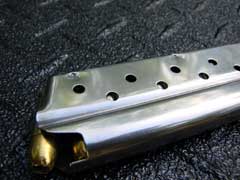



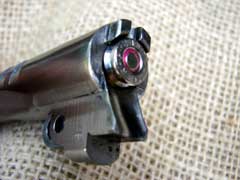
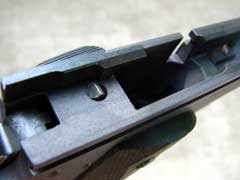
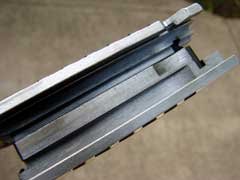
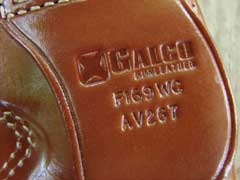
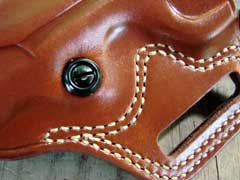
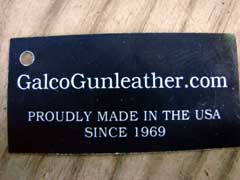
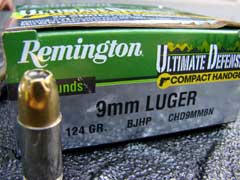
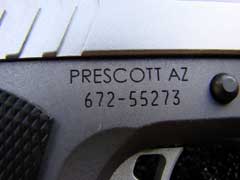
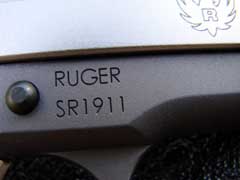

|
![]()